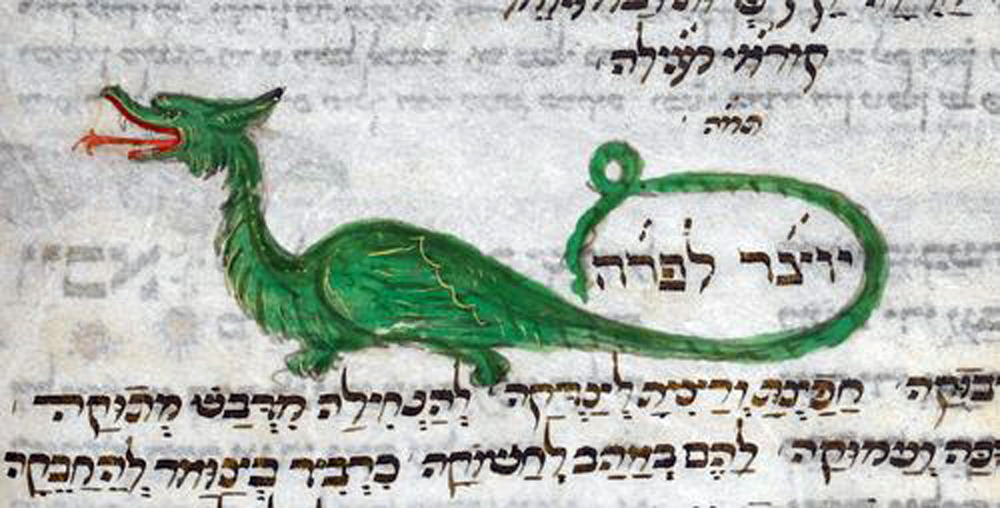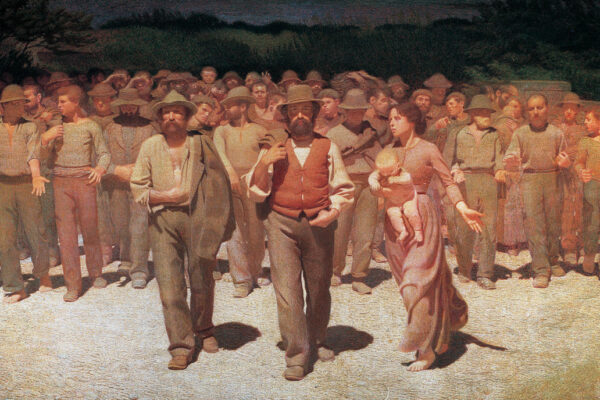Segre, a committed Zionist who was also one of the grand old men of contemporary Italian Jewry, died in Turin on Saturday. He was 92.
Born near Turin in 1922, he fled to Palestine in 1938 after Italy’s fascist dictator Benito Mussolini imposed anti-Jewish racial laws. He volunteered for the British Navy in World War II, and later fought in Israel’s War of Independence as a paratroop officer. After Israel’s independence he became an Israeli diplomat.
Known in Israel as Dan Avni, Segre was a friend of David Ben-Gurion and recalled that he practiced yoga with the nation’s first prime minister.
Segre wrote for Italian newspapers and authored numerous books. He taught at universities in Israel, the United States and Switzerland.
In the United States, Segre was best known for his best-selling autobiography, “Memoir of a Fortunate Jew,” which first came out in English in 1987. He also was known, especially in the U.S., as Dan Vittorio Segre.
Many years ago, at a lunch in Princeton, a venerable professor asked me whether Jews still existed in Italy.
Was it a justified question? In a sense, yes.
Of the 40,000 Jews who, on the eve of World War II, could claim to have resided in the peninsula for several generations, some 10,000 disappeared through conversion, another 12,000 emigrated abroad (including 2,000 to Palestine), and more than 7,000 died as a result of deportation. Add to this the effect of mixed marriages and the decline in the birthrate, and you come up with about 10,000 Jews of old Italian origin among the 30,000 currently registered ones, in a country of 57 million inhabitants. Yet if you ask any Italian to tell you how many Jews he thinks live in Italy, the answer will be between half a million and two million.
This is one of the many mysteries of contemporary Italian Jewry, and it is about these “mysteries” that I feel privileged, as a Sephardic Italian Jew, to talk tonight under this prestigious Jewish roof.
Another mystery, which rabbis avoid talking about, is that Italian Jews never accepted the “herem,” the rule of Rabbi Gershom, against polygamy. This could have turned Jewish Italy into a halakhic Las Vegas, and an excellent source of kosher matrimonial business. But it did not.
Yet another, more serious, mystery is why the number of Jews remained unchanged in Italy during the 19th century—about 30,000 souls, just as today—in spite of the fact that Italy was a transit area for thousands of Jews who moved from eastern to western Europe and the Americas. It was not always like that.
Between the 9th and the 13th century, in southern Italy and in Sicily, scores of Jewish communities flourished, with perhaps 150,000 members—a figure never again reached.
Life changed for the worse with the expulsion of the Jews in 1492 from Spain and its Italian possessions, which included Sicily and southern Italy. From that time until the emancipation of the 19th century, Jewish life was not different from that of other European communities.
At the time when the Philadelphia city fathers took care to provide kosher food for the Jews invited to the festivities in honor of the American Constitution, Jews in Rome were forbidden to follow their dead in procession, or to sell goods to non-Jews; they were obliged to wear yellow stripes on their clothing, and their rabbis were made responsible for bringing them to listen to conversion lectures.
The belief that hostility against the Jews never existed in Italy is unfounded. But those who listened yesterday evening to the wonderful concert of Italian Jewish music could see how, at a time when Jews were still confined to the ghetto, social and cultural life between Jews and gentiles was more alive than in other parts of Europe.
When Napoleon invaded Italy in 1796, granting the Jews their first emancipation (which lasted till his fall in 1815), the Jews of Italy still lived in ghettos: 9,000 of them in the Papal States, 6,000 in the Republic of Venice, and about 5,000 in the Grand Duchy of Tuscany, where they enjoyed very favorable conditions, especially in the harbor city of Leghorn.
Six thousand lived in the area of Trieste and Milan, which was under the Austrians, and another 6,000 in the territories under the House of Savoy, which included Piedmont, Savoy, the coastal area from Nice to Genoa, and the island of Sardinia, where there were no Jews.
The French “new international order” granted freedom but imposed heavy taxes, and occasionally made Jews the scapegoats after Napoleon’s defeat. Some Italian Jews joined the French armies and achieved careers, like Rubino Ventura, who became commander in chief of the Maharaja of Lahore’s army, conquered part of Tibet, married an Indian princess, and ended his life in Belgium, where his beautiful daughter married a local aristocrat. A good story for a movie!
In Piedmont, at that time one of the most backward regions in northern Italy, Jews during the French rule amassed considerable fortunes and promoted local industries, in particular silk weaving. With the return of the old regime in 1816, they were again forced into ghettos, but legislation obliging them to sell their real-estate properties was never applied, out of fear—as we read in one of the reports of the Minister of Finance to the Piedmontese king—that a massive sale of lands and buildings would flood the real-estate market and harm the kingdom’s already weak economy.
To give an illustration of the economic role this tiny community of 6,000 souls played (1,300 of them were listed as poor), in 1816 it underwrote a government forced loan with 300,000 lire, as contrasted to the two million subscribed by the rest of the population, which was three million strong.
The Jews in Piedmont were an educated group in a backward agricultural society, able to correspond with other Jews inside and outside Italy in Hebrew, a language the police did not understand. They were politically motivated in favor of liberalism, which the Piedmontese dynasty had adopted to legitimize the unity of the peninsula against the anti-liberal aristocratic government of the other states. Jews therefore naturally represented a recruiting ground for the revolutionary, nationalist movements and their affiliated secret societies. The prophet of the Italian Risorgimento, Mazzini, traveled in Italy dressed as a rabbi, and he died, in 1872, in the house of Nathan Mayer, one of Italy’s great patriots.
Thus, this tiny Jewish community in northern Italy, and especially in Piedmont between 1816 and 1848, represented a very significant part of an emerging middle class. In a movement such as the Risorgimento, guided by a national, liberal, anti-clerical middle class, the Jews became a compact group of “founding brothers,” if not founding fathers, of the new Italian national “consciousness.”
Antonio Gramsci, founder of the Communist party, wrote: “The formation of the national consciousness of the Italian Jews developed parallel with the formation of the Italian national consciousness, and therefore did not insert itself into an already existing national consciousness.” This explains their disproportionate role in such a dramatic political process.
In the two first Italian wars of Independence (1848–1849) Jews supplied, proportionally, 55 times more volunteers than the rest of the population. In the war of 1859 the disproportion increased to 115; in the war of 1860–61, the disproportion was 110; in the war of 1866 the proportion decreased to 74 because of the expanded recruiting possibilities of the newly formed Italian army. In 1870, a time when, as already mentioned, the Jews of Rome were still living in the ghetto, there were 139 Jewish officers in an officers’ corps of 14,000; that is, 46 times more than their demographic size would suggest—and this at a time when, in the rest of Europe, Jewish officers were allowed only in the medical corps.
Italy was the first country in Europe to appoint a Jewish minister of war, Count Ottolenghi, and a Jewish prime minister, Luigi Luzzatti. Issac Artom was the private secretary of Cavour, the political creator of Italian unity and the first Jewish ambassador to the court of St. Petersburg. Giacomo Dina, a member of the hevra kadisha of Turin, was Cavour’s “spin doctor,” as the editor of his newspaper L’Opinione. The chief rabbi of Turin, Lelio Cantoni, served as an electoral agent for Cavour, whose area of control included the ghetto. In fact, the vote of the Turin Jews was decisive for Cavour’s return to Parliament in the close election of 1853.
It is not surprising that one year after the conquest of Rome, in 1871, 11 Jews sat in Italy’s Parliament, as against five in Vienna, six in Paris, and eight in London. Half a century later, when Fascism arrived, Italy, with a Jewish population of 33,000, had 24 deputies and 11 senators—more than the rest of Europe combined. A 1926 list of “most illustrious Italians” mentions 770 Jews, with 65 politicians and civil servants among them.
According to the 1909 national census, the 1/1,000 ratio was maintained in only two fields: criminals in jail, and prostitutes. It is not by chance that after World War II, four out of six living Italian Nobel laureates were Jews who had fled Italy because of Mussolini’s racial laws.
This situation, which lasted for 90 years, had three major consequences for the Jews of Italy. The first was their illusion that their fate was unique, different from that of the rest of the Jews. The second consequence was that in just three generations, they assimilated to such an extent that Jewish traditions and the Hebrew language were largely abandoned and forgotten. In an open letter to them in 1906, the Zionist leader and writer Max Nordau asked whether Italian Jews could still be called Jews. For Chaim Weizmann, the historic leader of the World Zionist organization and the first president of Israel, Italian Jews represented “a mystery,” because they seemed to him to be both completely assimilated and very proud as Jews.
The third consequence was that the Fascist racial laws of 1938 found the Jews of Italy completely unprepared to face anti-Semitism. Yet two-thirds of them were able to survive, either leaving, or in hiding or by joining the underground resistance. This was because until the German occupation of Italy in 1943, they were allowed to carry on with their lives, albeit with many restrictions (as Primo Levi recalls). It was also thanks to the help of the many Italians who risked their lives, after the fall of Mussolini’s regime, to protect Jews from the Nazis.
Many other fascinating aspects of Italian Jewry have not been discussed here: their role in universities, journalism, finance, art, and politics—from the Communist Left to Fascism. We will, however, touch on two other mysteries: Italian Zionism, and the postwar revival of Italian Jewry.
Italian Zionists played important roles in arranging meetings between Herzl, the Pope, and King Victor Emanuel III, and between Weizmann and Mussolini. They aided in the creation of the Revisionists’ naval school at Civitavecchia, in which future admirals of the Israeli navy were trained. But while in the rest of Europe rabbinical authorities, with minor exceptions, opposed Zionism, in Italy it was the rabbinical leaders who promoted it, as a kind of Risorgimento and as a means to fight assimilation. When Mussolini’s racial laws struck the Jews like a thunderbolt, Italian Zionism, with its unusual combination of Judaism and nationalism, was the emotional and intellectual influence that caused about two thousand of them—an extraordinary number—to go to Palestine, before, during, and soon after the war. I left my Fascist youth naval unit to join them, ignorant of the history of both Judaism and Zionism.
As a result, this group of people—who together with their children and grandchildren for many years represented less than 0.5 percent of the total population, and today much less—became prominent in Israeli universities, banking, industry, medicine, public administration, and diplomacy. They established kibbutzim, like Enzo Sereni, the most famous of them, founder of Givat Brenner and killed in Dachau after parachuting in British uniform behind the German lines. Fidia Piattelli started what today is the impressive Israeli Air Industries. Yoel Racca rests under a gravestone that bear the simple inscription “Father of Israeli Physics”; Roberto Bachi founded the Israeli Institute for Statistics and Demography, which apart from its scientific and social value has been one of the strongholds of Israeli democracy. Two rabbis, Umberto Cassuto and Elia S. Artom, wrote a biblical commentary in 17 volumes which has become so popular in Israel that it is known as the Cassuto Bible. The Israel Prize, established in 1953, is Israel’s most prestigious award to citizens who have contributed in a significant way to the state. Between that date and 1996, five Italian Jews have been honored with this prize, among 432 other recipients—a ratio 20 times greater that that of the rest of the population.
In 1997, I was convinced that by the third generation, these immigrants would “ethnically” disappear, and that little could be expected from the depleted communities in Italy itself, where the Italian Jews had become a small percentage of an already dwindling community made up of Libyan, Iranian, Lebanese, and Egyptian Jews. This turned out to be untrue. In Israel, the Italian Jewish consciousness, far from disappearing, is strengthening, both among the new generations born locally, and the growing number of immigrants from Italy. The Tempio Italiano of Jerusalem, with its museum and unique art collections, its Institute of Italian Jewish Studies, and its laboratory for the restoration of ancient furniture, has become a vibrant center of culture, tourism, and intellectual and political meetings. A recently created Beit Midrash has revived Renaissance Italian Jewry’s ancient tradition of elegance and spiritual openness toward the gentile world. With the intellectual freshness of its strict but civilized orthodoxy, it attracts a growing number of students.
At the same time, in Italy, a new generation of native rabbis—many of whom, like the new Chief Rabbi of Italy, combine Talmudic and scientific careers—seems to be infusing new life, new enthusiasm, and new determination into a community in which Jewish schools are attended by hundreds of children in Rome, Milan, and Turin. For some, this remains a mystery. For my friend and teacher, Rav Adin Steinsaltz, Italian Jews are contemporary proof of the revival of the dead.









